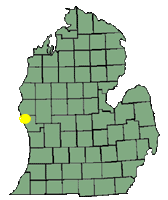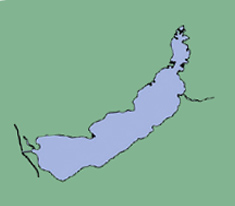|
White Lake Channel Piers
The Lighthouse
Life Saving Station
|
|
Catwalk |
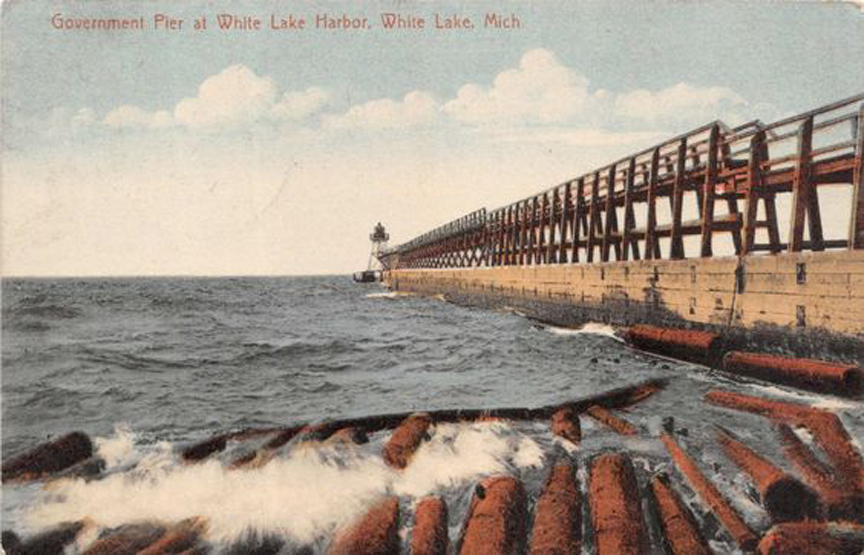
1875-1900 |
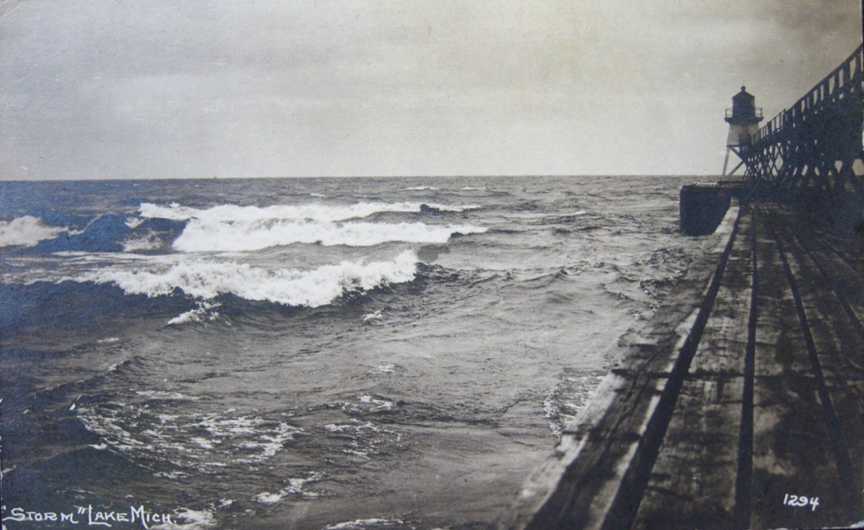 |
|
A number of sawmills
were established in the White Lake area between 1836 and 1850. Lumber
from these mills was rafted through the narrow natural channel between
White Lake and Lake Michigan before being loaded on ships, which
sometimes had to anchor out in the Lake. This was a time-consuming
process, and the local lumbermen lobbied for an improved waterway.
In 1866, Congress
appropriated $67,000 for the construction of a new channel between
White Lake and Lake Michigan, and an additional $10,000 for the
construction of a lighthouse. Construction on the substructure began
in 1867 and progressed slowly. In 1869, Congress appropriated an
additional $45,000 to cover cost overruns. After four years, the
channel project was finally completed in 1871. $1,059 of the
lighthouse money was spent on the construction of a beacon at the end
of the south pier.
Due to the amount of
commercial traffic, the channel was originally much longer than it is
today: 1,717 feet on the north side and 1,953 feet on the south. It
had a depth of 16 feet and an outside width of 200 feet. The width of
the channel inside the walls is 80 feet.
Pilings were driven
into the sand with stones piled around the outer edges of the pilings
up to where the wood channel walls began. The wood channel walls/piers
were then filled with stones. An elevated walkway, or catwalk, was
built in 1875 to enable the keeper to reach the pier head light in
heavy weather. Oil lamps were used instead of electricity and were
lighted by hand each evening. Thus the upper walkway was not just a
convenience, but a necessity.
|
|
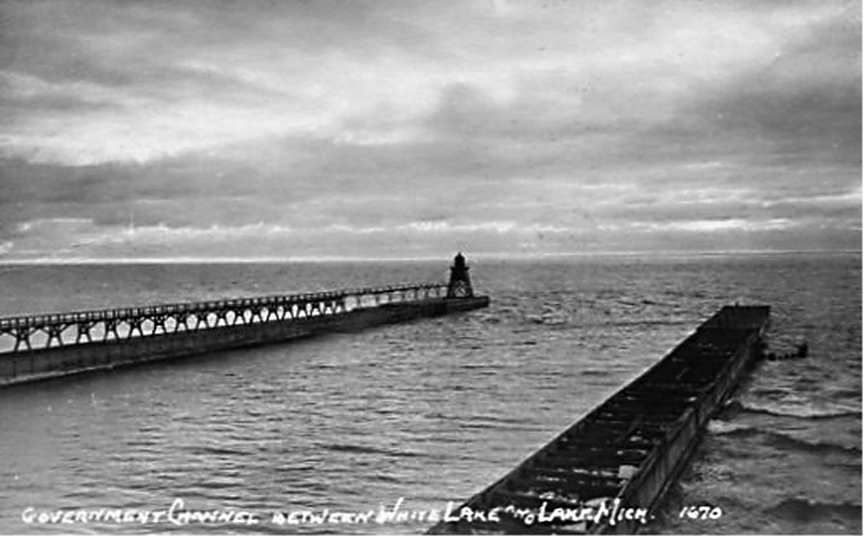 |
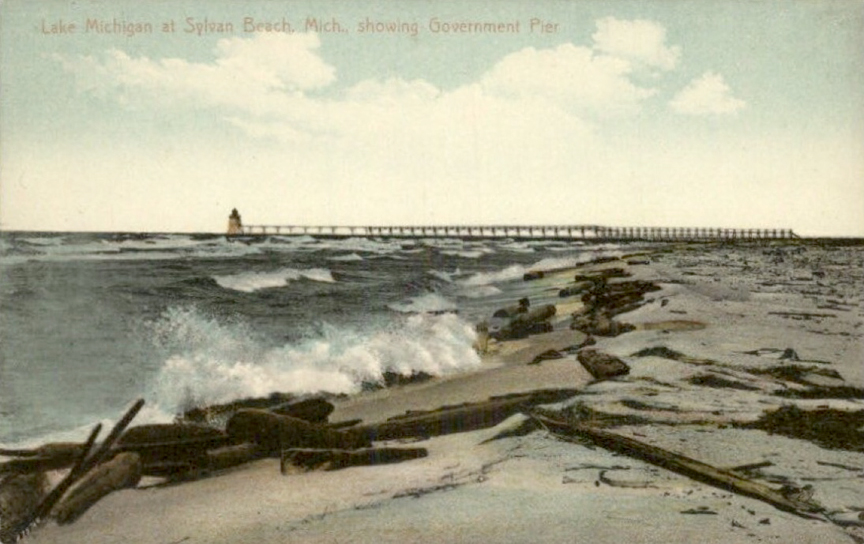
ca
1910 |
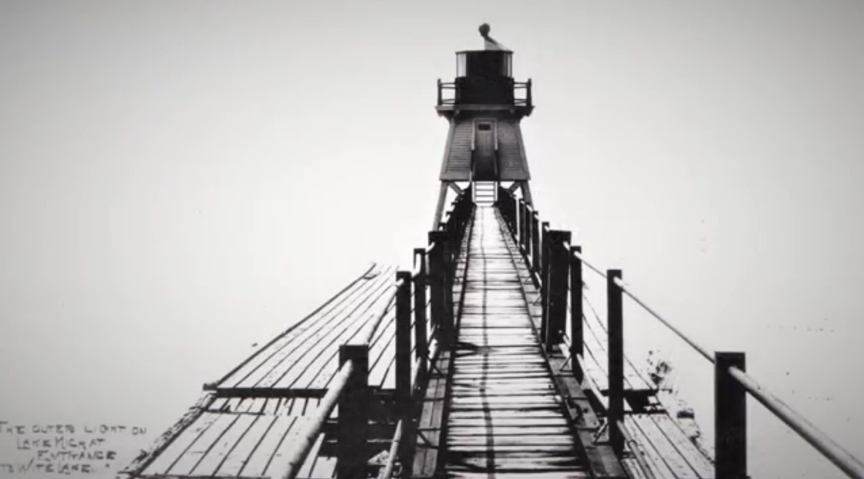 |
|
In 1880, the beacon
was moved 100 feet lakeward and a corresponding among of elevated
walkway was built, along with an extra 226 feet to replace a section
that was carried away by a storm. The tower was moved another 150 feet
in 1884, and the elevated walk was extended to it.
Given their exposed
location, the pierhead tower and elevated walkway suffered significant
damage over the years from a variety of sources. On August 15, 1877,
Keeper Robinson recorded the following in his log: “The steamer
Tempest entered this harbor and a spark from her smoke stack fell into
the pier and burnt the foundation of the frame of the South Pierhead
Beacon Light.” Shallow water in the channel between the piers caused
two schooners to collide with and damage the elevated walk in April
1890. A piece of driftwood tossed up by violent waves in December
1904, broke a section of the walk. In August 1911, the elevated
walkway was struck by lightning, and the pierhead tower suffered the
same fate in July 1916.
|
|
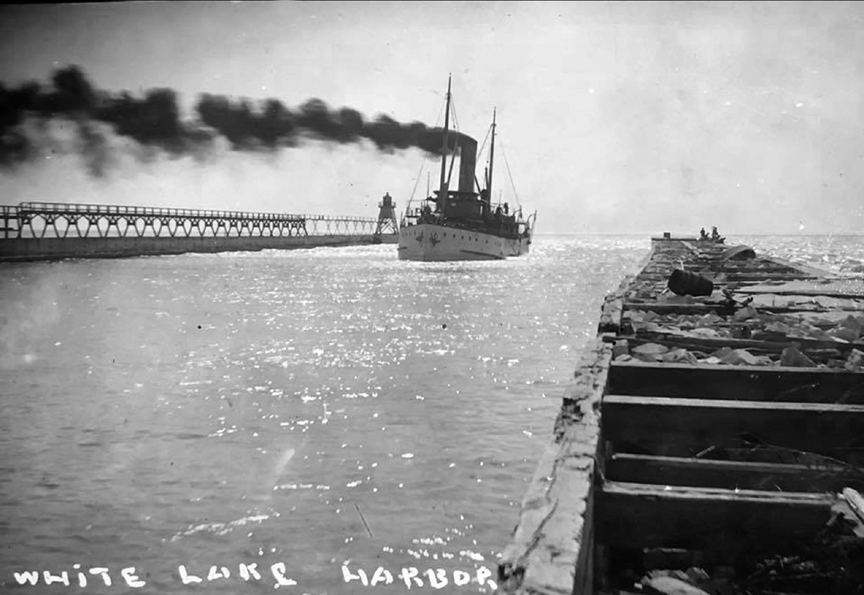
|
Channel Wall
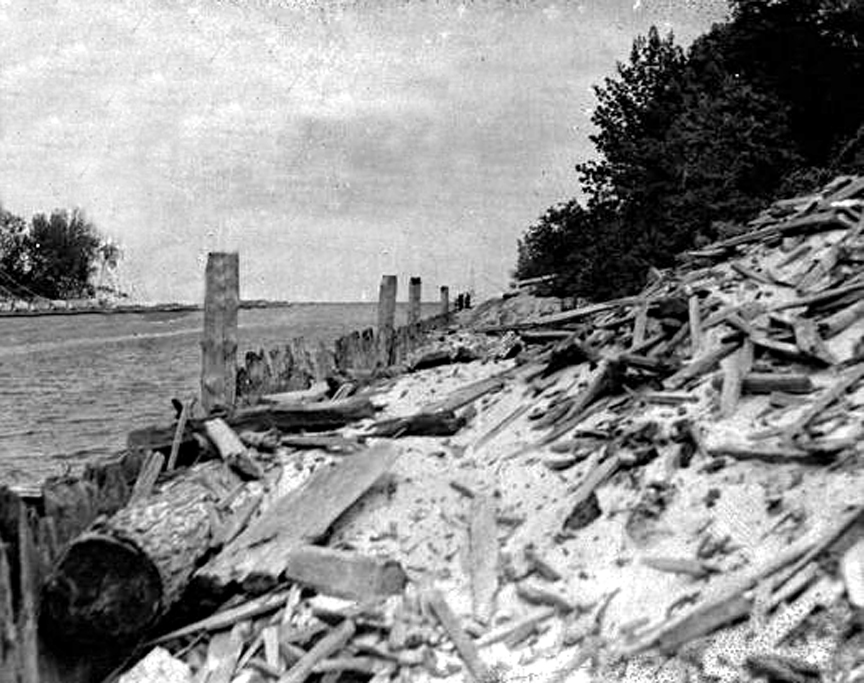 |
|
By the
1920s, heavy seas and ice had taken their toll on the wooden piers,
and on June 20, 1924, Keeper William Bush noted in his log that he had
spent two hours during the night fighting a fire in the south pier.
With the south pier settling and breaking up, the metal walkway was
taken down during the spring of 1925. At the same time, the light in
the pierhead tower was changed to acetylene supplied by tank, so it
wouldn’t require daily attention. Another fire, however, broke out in
the pier on September 9, 1928, that necessitated a call to the
Whitehall fire department. |
|
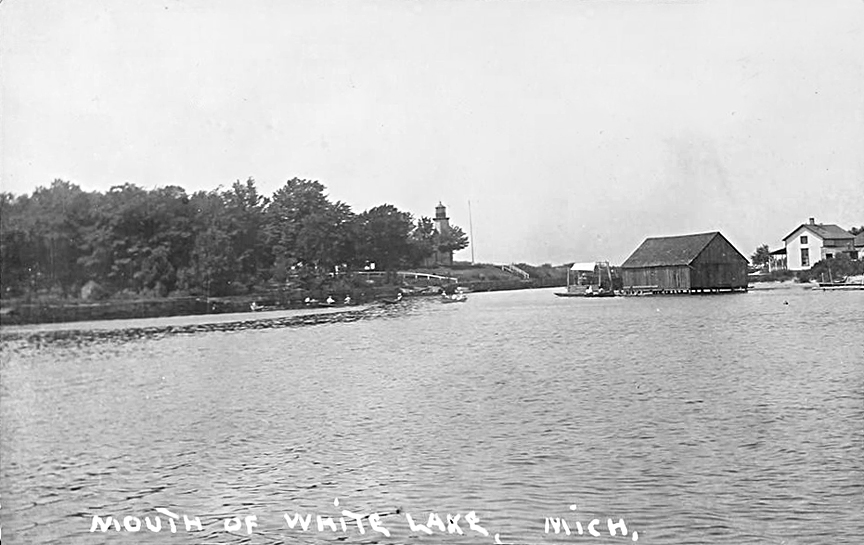 |
|
In 1925 & 1927, the
White Lake harbor was marked for discard based on the drop off of
cargoes passing through since 1922. In 1930, it was urged that the
harbor be kept open as an emergency port for all boats on the Great
Lakes. If the channel had been properly maintained, a tug and barge
could have taken refuge from a storm which ended up destroying the
barge.
In 1930, a thirty-one
foot tall metal, skeletal tower replaced the faithful wooden tower,
which was, according to the keeper’s log, “wrecked to pieces.” The
metal pierhead tower was electrified in 1939, and then replaced with a
steel pole in the late 1980s.
|
|
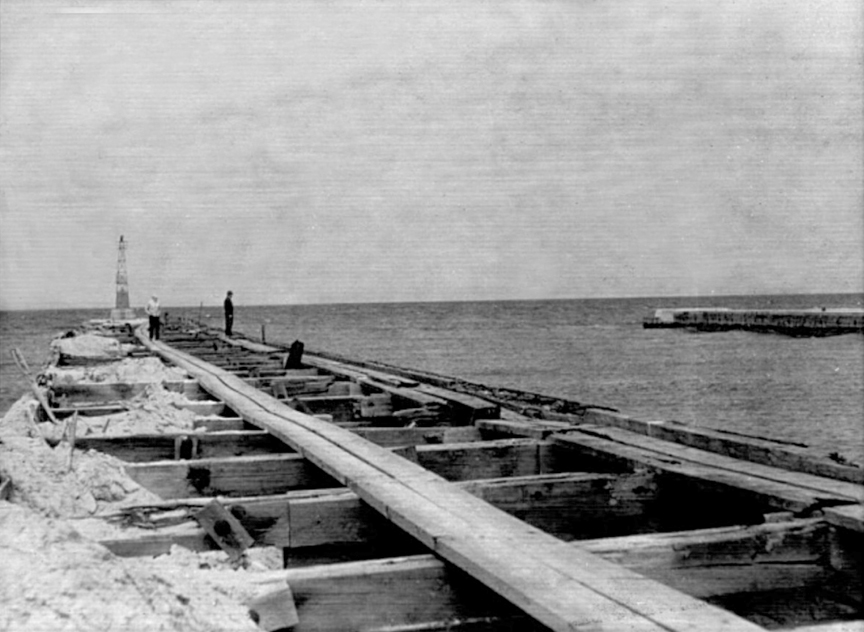
Sometime after 1930 when the pier head tower was changed
|
|
After the removal of the catwalk in 1925 and the
structure continued to be wooden until 1936 when the first
reconstruction took place. That lasted until the most recent
renovation which took place in 1998 when they changed the sides to the
corrugated sheet metal and added the blue rail.
HERE |
|
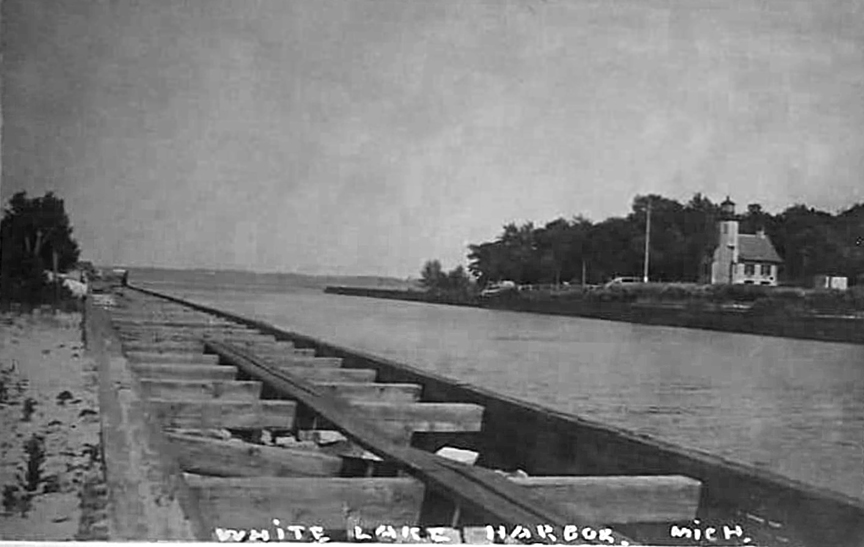 |
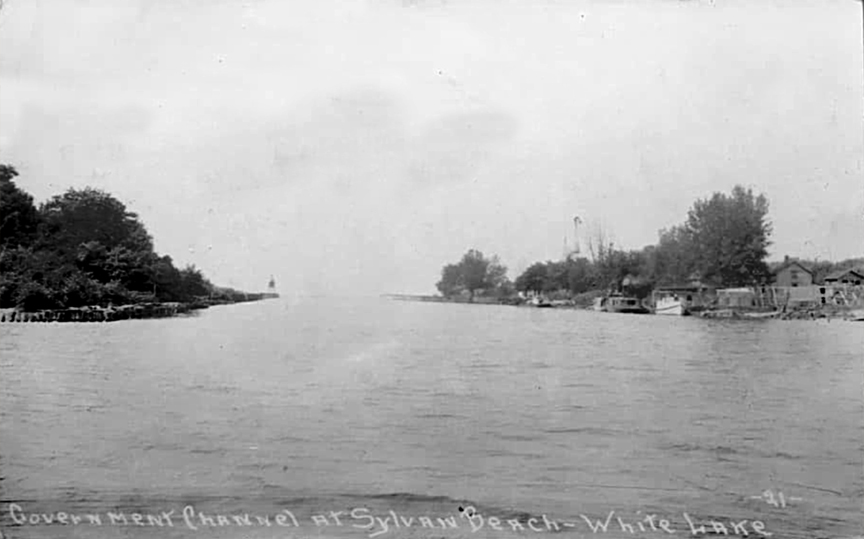
Prior to the 1936 reconstruction |
|
In 1936, an allotment
of $28,000, and the belief that sufficient funds would be forthcoming,
work began and the wooden pier walls were replaced by concrete, but
the center reinforcement of stones was still the same. Presumably it
was at this time that the length of the channel was reduced to 80 feet
and the depth from 16 to 12 feet. Until the early 1950s, there was
only a red channel marker on the south pier, and no marker on the
north pier.
|
|
Before & After The 1936 Reconstruction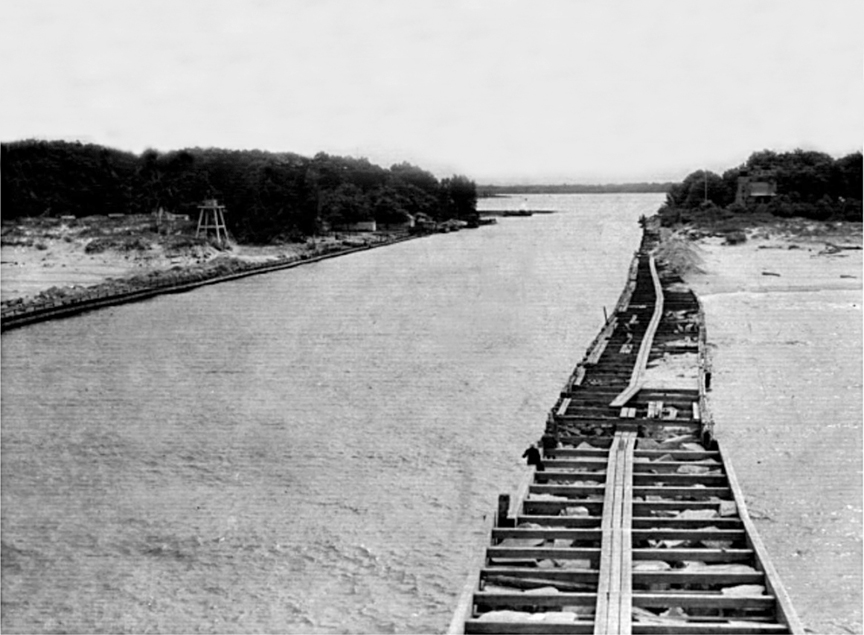
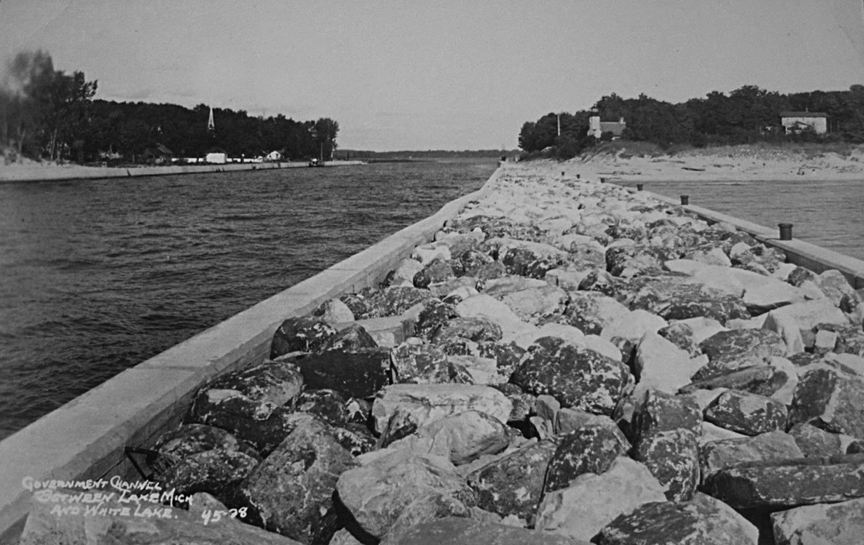 |
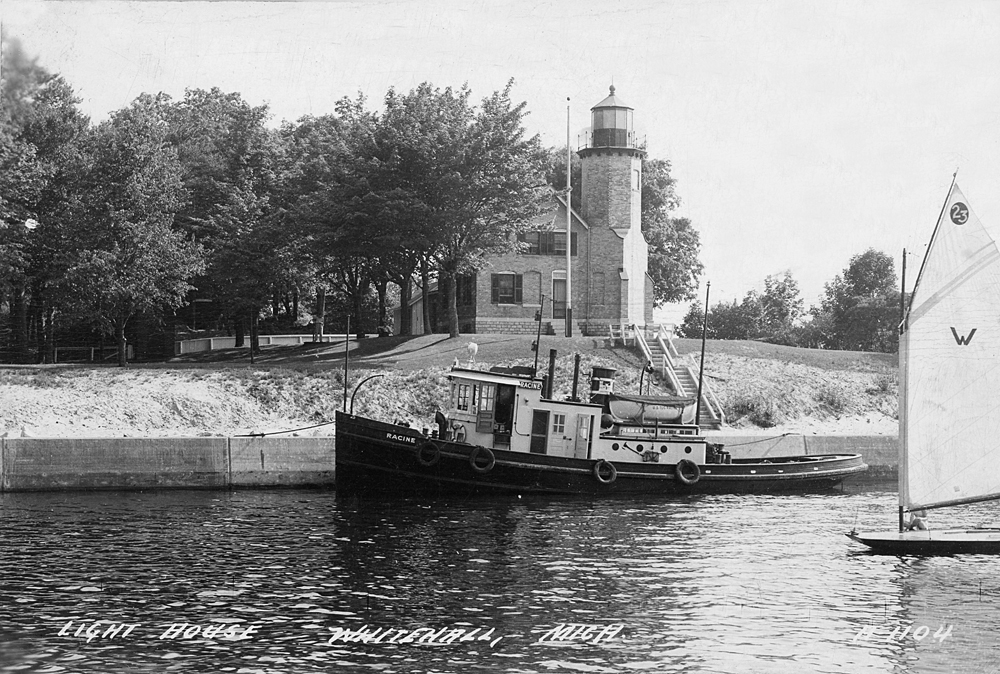
Tug Racine
In April, 1936, work began on the north pier of the White
Lake channel by the U.S. Government Engineers with equipment arriving that
included a quarters boat, three derricks, two scows and the tug “Racine”,
along with 20 men from Milwaukee. Forty additional men from the local area
were also hired for various jobs. In July of that year, work began on the
south pier of the channel. This picture was most likely taken during that
time period. |
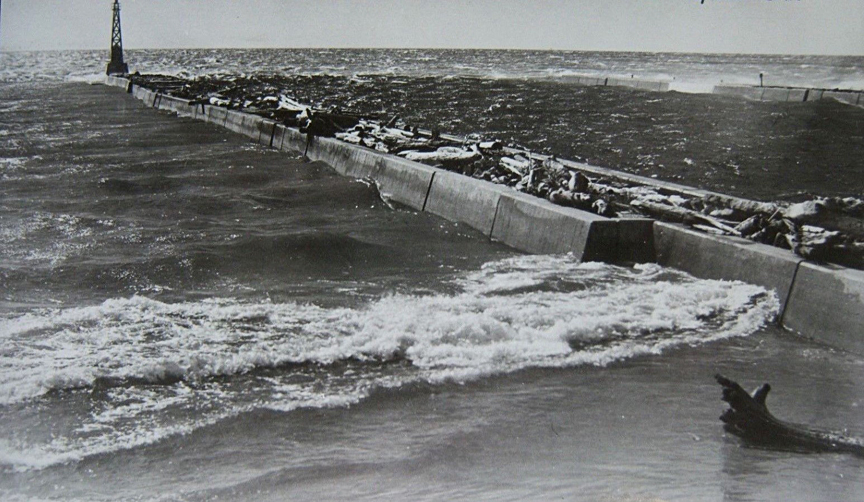
1940 South Side
|
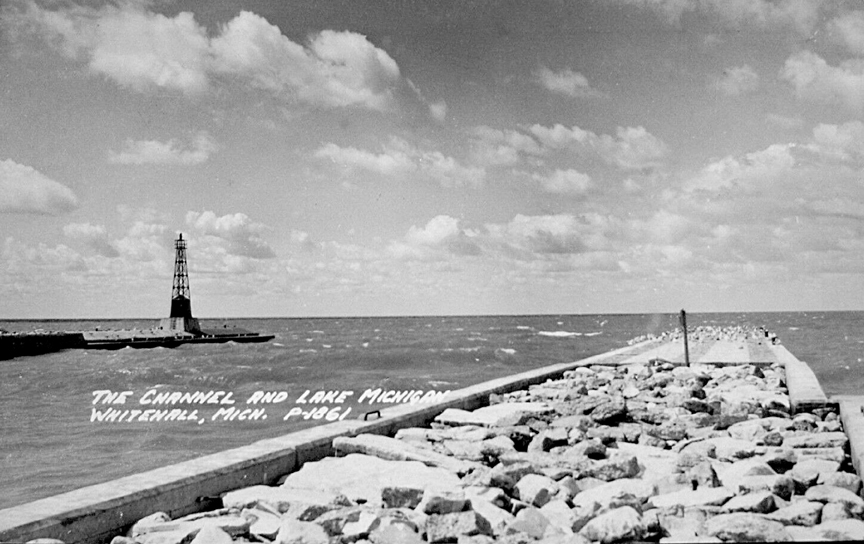
North Side |

ca 1924
|
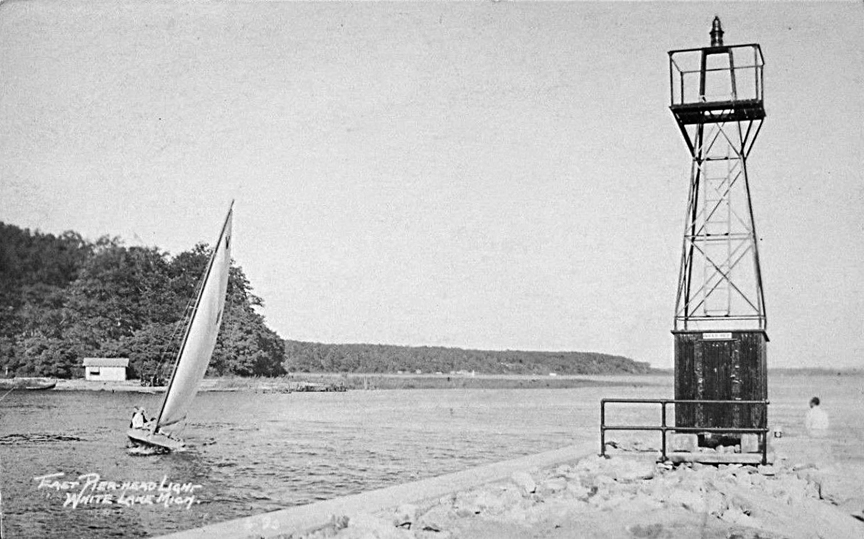
ca 1939 Entering White Lake
|
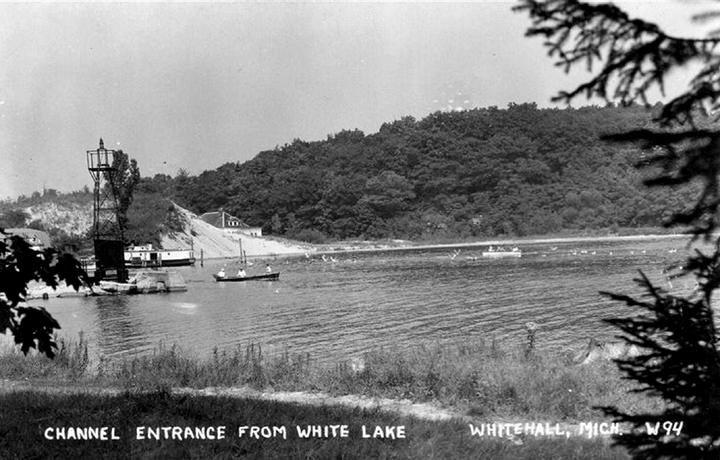
|
ca1952
About 1985, a report
indicated that the channel length of 80 foot in between Lake Michigan
and White Lake was adequate. Also, the depth was reduced from 16 feet
to 12 feet.
By the late 1990s,
structural repairs were again necessary, and in 1998 a major project
was completed at a cost of almost 8 million dollars. Repairs consisted
of encasing the existing structure with cold rolled steel sheet
pilings, and capping with reinforced concrete. A 200 foot rubble mound
wave attenuator structure was constructed on both sides of the channel
to reduce the wave intensity entering the channel.
|
|
|
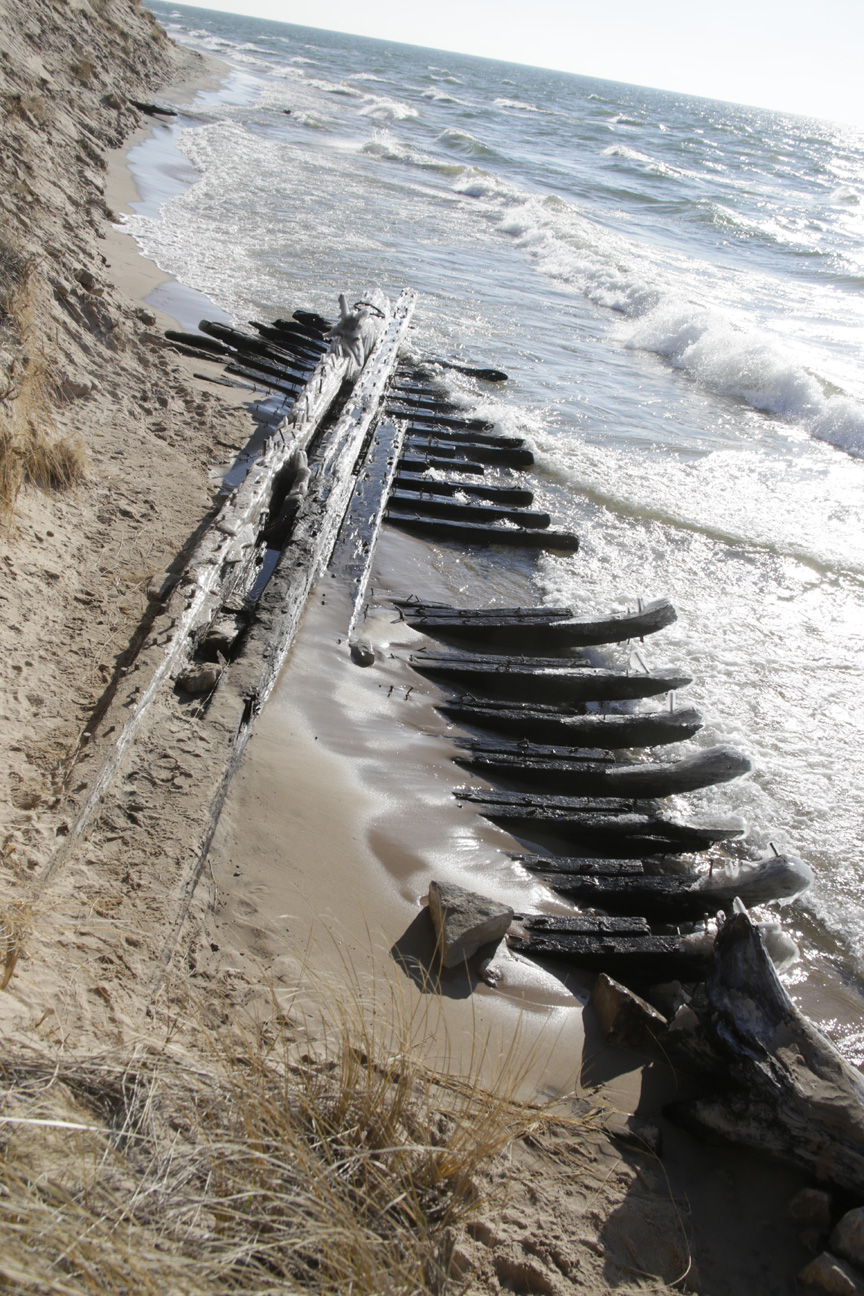
Old shipwreck located on the shoreline adjacent to the South Pier,
pictured here in December 2018. According to Valerie VanHeest from the
Michigan Shipwreck Research Association and Eric Harmsen, Marine
Archeologist from the Port of Ludington Maritime Museum, the shipwreck
was identified as the Schooner Contest, which sank on October 25,
1882. The shipwreck has appeared at least twice before - in 1942 and
again in 1974. As of December 2020, parts of the ship are still
visible.
According to Valerie VanHeest, this is what the Contest might have
looked like, as it was a typical style for the day. |
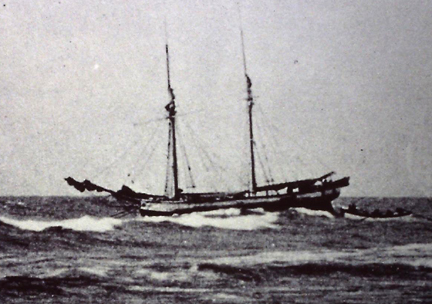 |
|
|
|
|
